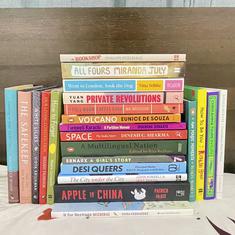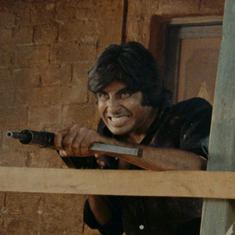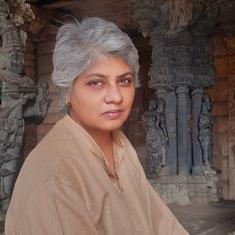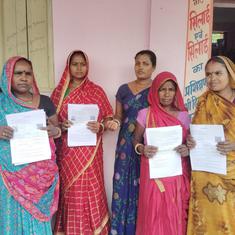The Big Story: Big chief, small Centre
Chief of Army Staff General Bipin Rawat was in the news again on Thursday, with the headline on the front page of the Indian Express declaring that the army chief believes there is a “need to tell youth azadi will never happen, you can’t fight us”. The interview itself stuck to this sentiment, with Rawat telling the youth of Jammu and Kashmir not to “get carried away unnecessarily”.
The interview was both revelatory and confounding.
For one, Rawat seems to acknowledge that the problem isn’t a military one. “I know that the youth are angry,” he says, adding that, “there isn’t a military solution to this issue.” He claims that he wants politicians, political representatives to go into villages, especially in South Kashmir, to talk to people.
And, most intriguingly, he touched on the demand also made at an all-party meeting in Jammu & Kashmir for an internal security ceasefire, considering the month of Ramzan as well as the Amarnath Yatra is coming up. Rawat said he is “ready to suspend” military operations, but followed that by asking, “who will guarantee that there won’t be fire at our men, at our vehicles? Who will guarantee that policemen, political workers, our men returning home on leave aren’t attacked, aren’t killed?”
Yet, despite this seeming awareness of the political nature of the problem, the army chief went on to make some remarks that betrayed an unhelpful belligerence. The azadi remark for example is both a given – obviously, the Indian Army’s position is going to be against any demand for secession – but also unnecessary, considering any political solution will have to acknowledge the demands for azadi. Similarly, Rawat’s decision to say that his forces have not been so brutal, compared to Syria and Pakistan where “they use tanks and air power” offers little consolation to the many who have lost their lives in Kashmir, and also comes off as a threat.
Rawat acknowledged that something changed after the Hizbul’s Burhan Wani was killed in an encounter in June 2016, and even says, “I am still trying to understand where did all that anger come from”, but he follows that up with a simplistic conclusion, saying “the youth have gotten themselves in Pakistan’s trap. They are being consistently incited to attack us.”
It is possible to argue that Rawat would have to say this, because it reflects what is the position of the Indian Army, not the political establishment. But that brings up the question, why is Rawat speaking at all? At a time when politicians are attempting to find a way through the complete mess that has been the Jammu and Kasmir policy of the last few years, both for state and Centre, why is the Army Chief the one making remarks that are inevitable going to seem provocative for people on the ground.
Rawat has made some truly troublesome statements in the past as well, but after a point it stops becoming a question of what he is saying, and instead one of why he is saying those things. Undoubtedly, Rawat would not have spoken without the Centre’s go-ahead, which leads to the obvious conclusion that the political leadership in New Delhi simply does not have a political answer to this question, and so they would rather have it that the army talk of tanks and air power than try and figure out why people in the Valley have become so angry. In that way, Rawat’s interview might actually end up telling us very little about the Army Chief, and much more about the political leadership that appointed him and now seems to hide behind his uniform.
The Big Scroll:
- “Cold-blooded murder”: Kashmir’s tourism industry is on edge after visitor dies in stone pelting, reports Rayan Naqash.
- View from the Kashmir Observer: Why do people sacrifice their lives to save militants?
- Why Army Chief Rawat’s comments about Assam party should worry all Indians who care about democracy, writes Shoaib Daniyal.

Punditry
- “New Delhi’s opposition to Australia even observing this naval exercise — a very low bar — in effect amounts to opposition to the Quad conducting any military activities, at least for now,” writes Arzan Tarapore in the Indian Express. “Whether Modi intended this as a sop to China, or a snub to Australia, the effects of this denial reach further.”
- “Twenty years ago, on May 11, 1998, India took a leap into the unknown world of nuclear weapon powers with the tests at Pokhran. Though the decision was taken after great deliberation and with preparation, how the reaction of the world would affect the future of India was unknown. But today, it is certain that the action was timely and inevitable,” writes TP Sreenivasan in the Hindu.
- “Commercial banks simply did not have the capability to assess credit risk on long-term investment lending because they have always been engaged in advancing short-term working capital,” writes Deepak Nayyar in Mint, adding, “The time has come to establish a National Development Bank (NDB) in India. Such a new institution would start with a clean slate, without any baggage from the past.”
Giggle
BJP’s ‘Mission 150’ in Karnataka accomplished!
— Satish Acharya (@satishacharya) May 11, 2018
@mail_today cartoon #KarnatakaElections #Mission150 pic.twitter.com/rFNREnRCPM
Don’t miss
Nandini Ramnath speaks to Eric Barmack, vice president, International Originals, to understand what Netflix has planned for the Indian market.
‘‘‘On the series side, we have a compelling argument –we are not just doing shows for India, but we are creating global TV,’ Barmack said. He cited the international popularity of such Netflix shows as the drug trade-themed Narcos, the German science fiction show Dark, the Spanish thriller Grand Hotel, and the Danish survival drama The Rain.
‘Shows like Narcos and The Rain are travelling everywhere, as are 13 Reasons Why and Stranger Things,’ Barmack said. ‘So when we are talking to people here, we are saying, you are going to be creating a new medium for India – a high-value production and a complicated TV series. Actors like Radhika Apte and Nawazuddin Siddiqui also get a chance to be on a global platform.’
Indian filmmakers are increasingly experimenting with bypassing theatres and being directly distributed on Netflix. Independent films such as Q’s Gandu and Rohit Mittal’s Autohead have been directly sold to Netflix. Anand Tiwari’s Love Per Square Foot, a comedy about Mumbai’s housing crisis that was produced by Ronnie Screwvala’s company RSVP, was premiered on Netflix in February rather that released through cinemas.”










